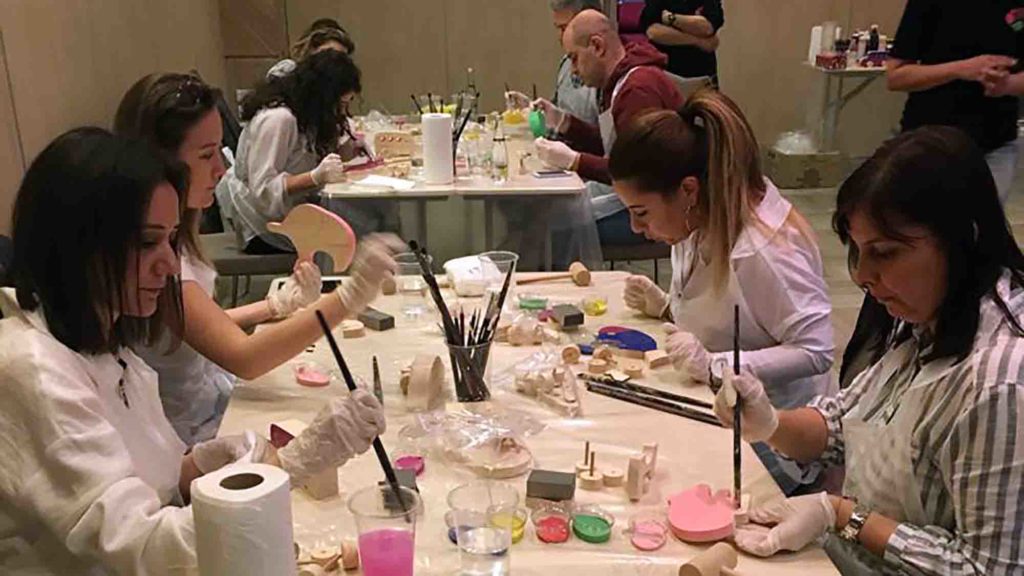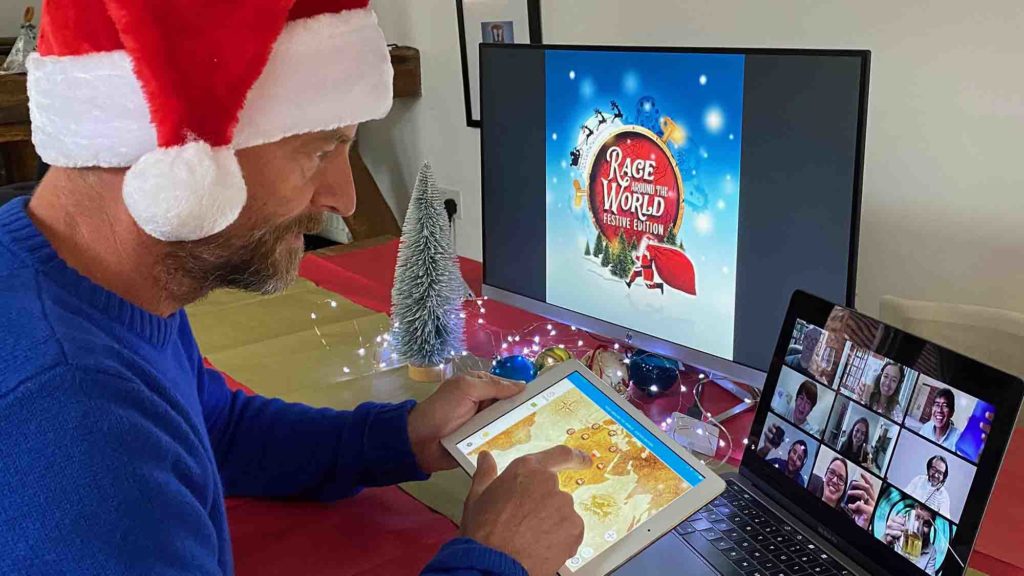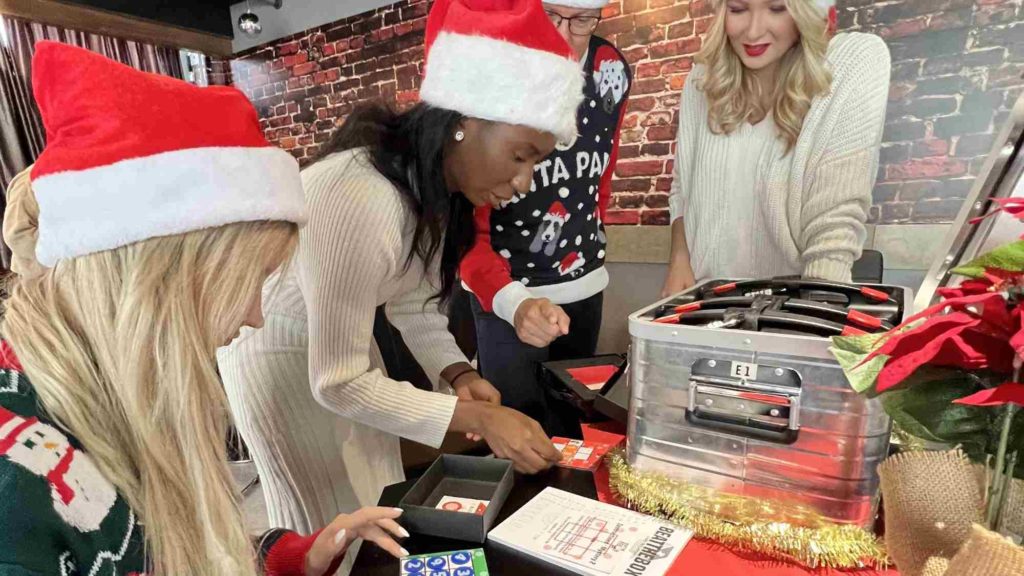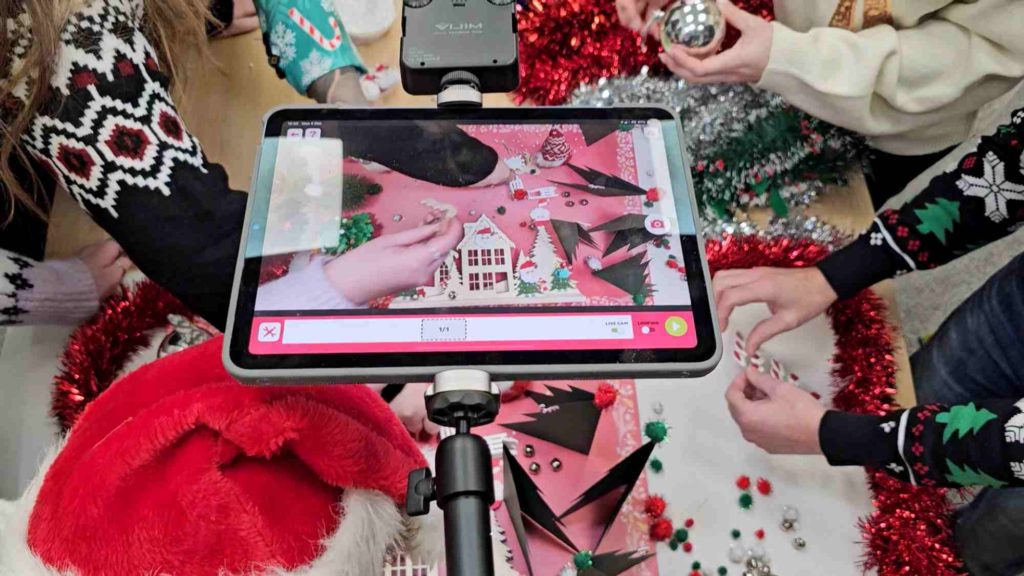End-of-year team-building activities are not just about celebration. With the right approach, they can be a catalyst for transformation, reshaping your workplace culture, strengthening trust, and setting a powerful tone for the year ahead.
By integrating insights from organisational psychology, particularly Adam Grant’s givers, takers, matchers framework, with well-crafted end-of-year experiences, you can host a year-end event that is not just enjoyable, but also meaningful, memorable, and strategically astute.
In his well-known TED Talk, organisational psychologist Adam Grant explains three dominant interaction styles in workplaces:
Most people fall somewhere between these categories. But Grant’s research shows that organisations where givers are supported and protected outperform their peers on almost every metric: profit, customer satisfaction, retention, and innovation.
End-of-year celebrations present a unique opportunity to activate the giving dynamic in a lasting way. When experiences are thoughtfully designed, they can bring out each style, highlight the power of collaboration, and build lasting cultural momentum.
Before your event, consider launching a simple interactive quiz through your Catalyst platform to help participants discover their own interaction style. This is a fun, low-stakes way to bring psychology into the celebration.
People arrive curious — primed to observe their own behaviour and others’. You can use quiz results to spark conversations, intentionally mix teams, or frame the activities that follow.
Q: How can a simple quiz improve a year-end team event?
A: By helping participants recognise their interaction styles, it primes them for deeper engagement, encourages self-reflection, and makes team activities more meaningful.
The right team building experiences don’t just entertain — they make collaboration tangible. Catalyst’s end-of-year programs are designed to draw out giving behaviours, highlight matchers, and make taker tendencies visible in a way that’s light-hearted but powerful.
For example, Flat Out Sleigh Ride challenges teams to design and race their own sleighs. It’s playful and competitive, but beneath the surface, it rewards shared problem-solving and selfless contributions. Givers often emerge naturally — sharing tools, offering advice, or stepping back to coach others.
Animate Festive taps into creativity and storytelling. Teams produce short animated films, requiring collective input and diverse talents. Matchers shine when they coordinate efforts, while givers elevate the final product by supporting others’ ideas.
In Toy Factory, teams work together to design, build, and assemble toys for children, often for donation. It’s a powerful way to align celebratory fun with genuine impact — reinforcing the value of contribution over competition.
For groups who love challenge and intensity, Beat the Box Rescue Santa combines puzzle-solving, strategy, and time pressure. Teams must communicate and collaborate to crack codes and “save Santa”. Takers get exposed quickly here, while givers help the group move forward under pressure.
And if your team thrives on energy and variety, Quickfire Festive blends rapid-fire challenges with an end-of-year celebration twist. Its structure encourages idea-sharing and spontaneous generosity: the more teams collaborate, the faster they score.

Some programs are especially effective at surfacing collective intelligence. Blockbusters Festive turns team members into storytellers, where success depends on sharing knowledge and weaving ideas together.
Activities like Go Give extend this spirit beyond the festive season. Designed to inspire purpose-led collaboration, Go Give challenges teams to work together to create tangible social impact for worthy causes. Including a program like this in your annual culture calendar reinforces that generosity isn’t just for the holidays, it’s part of how your organisation operates year-round.
Give Backpack brings teams together to assemble and personalise backpacks filled with essential items for children in need. It’s a hands-on, heart-led activity that perfectly embodies a culture of contribution, where givers shine and matchers help coordinate efforts to create maximum impact.

For distributed or hybrid teams, end-of-year events can be just as impactful. E Choir Festive connects people through music, allowing them to contribute their voices remotely and create a harmonious final performance. It’s a beautiful, literal demonstration of how many small contributions build something far greater.
Race Around the World Festive offers a dynamic online adventure that encourages problem-solving, quick thinking, and strategic collaboration, where givers share insights across virtual teams, performance soars.
Grant’s research makes clear: givers thrive when help-seeking is normalised, not stigmatised. During your event, incorporate short moments of reflection to help participants notice and acknowledge their behaviours.
For example:
Even five minutes of structured reflection can transform a fun activity into a culture-building moment.
Q: How do team-building activities shape workplace culture?
A: Well-designed events create shared experiences that highlight positive behaviours like generosity and trust, making those behaviours more likely to persist back at work.

One of the most powerful ways to reinforce giving is through recognition. Instead of only rewarding top individual performers, spotlight those who lifted others, making everyone feel valued and appreciated.
Peer-nominated awards, such as “Who helped you the most this year?”, are simple but incredibly meaningful. They reward the quiet contributors, not just the loudest voices, and help shift your cultural narrative toward contribution and collaboration.
Grant ends his TED Talk with the concept of pronoia, the belief that others are secretly working to support you. In giver-oriented cultures, that’s not a fantasy. It’s reality.
End-of-year team-building activities offer a rare moment to make pronoia tangible. Whether your teams are building sleighs, producing animations, racing to save Santa, or singing together online, each program can become a powerful metaphor for how you want your workplace to operate.
Q: What are some meaningful end-of-year team-building activities?
A: Experiences like Flat Out Sleigh Ride, Toy Factory, Animate Festive, and Blockbusters Festive combine fun with collaboration, helping teams end the year with trust, energy, and a shared sense of purpose.

The best end-of-year events aren’t just parties, they’re strategic interventions. By blending psychological insight with engaging, purpose-designed experiences, you can:
Catalyst’s end-of-year team building programs offer a spectrum of experiences, from creative to high-energy to online, that make this possible on a global scale.
If you’d like to bring the giver–taker–matcher framework to life in your organisation, start by choosing the right end-of-year team building activities, add a touch of reflection, and watch your culture shift joyfully.
Catalyst Global creates and curates the world’s leading team building activities, delivered through a licensed network of expert facilitators in 90+ countries.
Contact your local Catalyst Team Building Network representative to discover how our end-of-year programs can help you foster a more collaborative, high-performing, and purpose-driven team — and set your organisation up for a stronger year ahead.
© 2025 All rights reserved.
